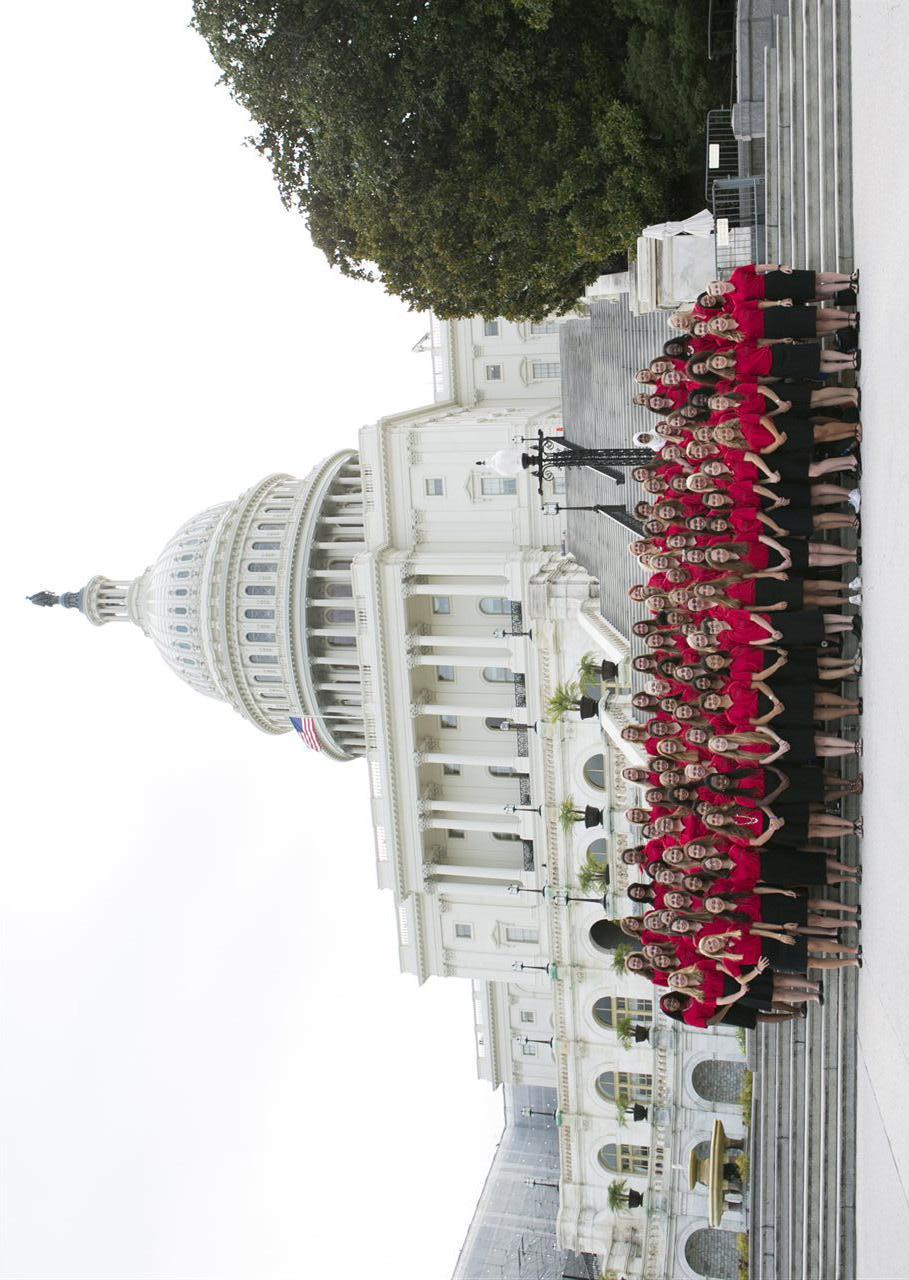
9 minute read
Six ways Nonprofit Public Broadcasting
In a time when consumers have more information and entertainment options than ever before, one resource continues to deliver high-quality, well-researched news and engaging entertainment programming that bridges the divide between national events and local activities.
Whether you are braving the I-5 slog, venturing to Yellowstone National Park, hiking Mount St. Helens or whale watching off the Alaskan coast, nonprofit broadcasting outlets keep families connected to their community, informed on the news of the day and entertained regardless of age, gender or demographic background.
Community radio stations, public broadcasting and non-commercial outlets bring a content-focused approach to their daily programs that serve to uplift their audience's region as much if not more so than any other media platform. There are six primary ways these outlets help local communities flourish and thrive:
* Creating a more engaged, informed community. Recent research from the Political Quarterly shows those who have access to public service broadcasting are better informed about government and politics, are more trusting of others, maintain more positive civic attitudes and have greater confidence in democratic institutions. That educated and engaged listener base is more likely to engage on key community issues.
* Stimulating creativity and innovation. Through programming that engages, explains and explores, public broadcasting plays a major role in supporting STEAM subjects. But many stations go beyond that. Spokane Public Radio, for example, recently rehabilitated a former fire station to include a state-of-the-art performing and recording studio for regional artists, thanks in part to grant funding from the M.J. Murdock Charitable Trust.
* Supporting local cultures. Public and non-commercial stations can often focus on elements of local and regional culture that might otherwise go unrecognized by other media outlets. For example, Anchorage-based Koahnic Broadcast Corp., a public radio station, and Nome-based KNOM Radio, a non-commercial outlet, both concentrate their efforts on programming that addresses the needs and interests of Alaska's Native populations. KBC's National Training Center also provides training opportunities for Alaska Natives and Native Americans interested in broadcasting careers.
* Filling the reporting gap. As some news sources struggle to maintain profitable business models, public broadcasting continues to offer in-depth coverage of important issues. Because its primary mission is public service and not profit, it can remain independent of corporate influences without sensationalizing news issues to boost ratings. As such, public channels are more highly trusted than commercial channels for the accuracy, reliability and impartiality of their news coverage, according to Political Quarterly. Recent examples of excellent, unbiased reporting include the comprehensive state election coverage regularly offered by the Bozeman-based Friends of Montana PBS.
* Diversity in programming. Relatively unencumbered by commercial pressures, public stations are free to broadcast shows and podcasts its leaders believe have the most information and entertainment value to its listeners. That typically contains a wide range of programming, from hard news, news features and in-depth documentaries to entertainment, sports coverage and educational kids' shows. * Ad-free. Since public stations are generally funded through tax money and private contributors, many stations can forgo all advertising revenues. That can be a breath of fresh air in an age when we're bombarded at every turn by invasive ads, and it allows audiences to focus without interruption on the quality programming being presented.
For decades, the Murdock Trust has been proud to support public broadcasting outlets across the Pacific Northwest through a number of grants, both for their ability to inform and to preserve and celebrate local culture. Visit murdocktrust.org to learn more.—
Small Businesses and the Benefits of Conscious Capitalism
What drives someone to take the risk and start their own business? In many cases, it's the knowledge that they can offer a great product or introduce new solutions to old problems. Passion and determination put entrepreneurs at the forefront of innovation. What's remarkable about so many small and medium-sized businesses today is that it's not just the bottom line they're after. Businesses are more focused than ever on socially and environmentally conscious causes.
Take, for example, small business Bayou with Love, who partnered with Dell to create a jewelry line using recycled gold from old computer motherboards. The jewelry line is just one example of a small business prioritizing doing good for the planet.
Cuvee Coffee practices direct trade, a model that considers environmental, financial and social sustainability as well as personal relationships. It builds partnerships with farmers who are good stewards of the land, pay fair wages to their workers and are often leaders in their communities. Cuvee then pays well above market prices for their coffee and in return, the company gets the very best coffee and the farmers make substantial profits.
By using ethical and altruistic principles to guide business practices, these entrepreneurs practice what many call "conscious capitalism," and investors are taking notice.
Investments from angel investors and venture capitalists have helped these businesses play their part in a national and global trend toward social betterment in business.
Here are a few ways small businesses can benefit from conscious capitalism. It opens the door to more capital from investors. When a company launches a humanitarian initiative or implements an ethical program, people pay attention.
According to Fundivo, angel investments in altruistic businesses have been steadily growing since 2002 and roughly four jobs are created per investment. Moreover, a recent study from The Forum for Sustainable and Responsible Investing reported that under sustainable and responsible investing guidelines, a total of $8.72 trillion was made in 2016, showing a 33 percent increase since 2014.
Increased networking opportunities through crowdsourcing; By helping businesses reach like-minded changemakers, the tech industry has made it easier for small businesses to maintain a conscious mission statement along with a profitable bottom line.
In particular, funding for socially-conscious businesses has become more easily achievable through crowdfunding campaigns on Kickstarter and Indiegogo. Even Kickstarter owners Yancey Strickler and Perry Chen insisted that their crowdfunding platform become a Benefit Corporation, ensuring they remain focused on their mission to bring creative projects to life rather than simply increasing the size of their own profits.
These crowdsourcing platforms are an efficient way for companies to find investors, but also to network and get their message out to a broader public.
A boost from tech. At the center of many altruistic businesses is the robust use of technology, which has allowed many highly successful small businesses to support social and environmental causes.
It's not only that having dependable and easy-touse technology is critical for these businesses, but many tech giants have implemented programs to support conscious capitalism in small businesses. For instance, as one of the world's leading IT suppliers, Dell has been particularly passionate about helping businesses with an eye for social change and environmental consciousness. Through its 2020 Legacy of Good plan, which outlines its own sustainability goals, it has helped small businesses use technology in a way that drives progress and social change. Dependable and affordable technology is essential to promoting social change, and that's why so many entrepreneurs and investors are realizing that when paired with technology, ethical business practices can do a lot of good and turn a profit.—

GetRuralLeaderMag.com | August 2018 15 A record number of women are running for public office this year. In the near future, we can expect more female public servants representing the American people - from local chambers to Capitol Hill. In light of this exciting trend, it is important to highlight programs that help develop young women to become the next generation of female leaders. One such program? American Legion Auxiliary (ALA) Girls Nation.
ALA Girls Nation is a weeklong mock experiential learning program, one that positions high-potential teens for a lifetime of public service to our country. This summer, 100 female high school seniors - two from each of our 50 states - will convene in Washington, D.C., for the 72nd Annual ALA Girls Nation. Each teenage girl represents her state as a "senator" - mirroring the structure of government at the federal level. During this transformative weeklong program, these senators form a fictitious nation, become "Nationalists" and "Federalists," enthusiastically campaign to hold office, and - perhaps most important - accept and celebrate the outcome of these elections and come together to serve for the good of the nation.
ALA is a nonpartisan organization committed to advocating for veterans' issues, promoting patriotism, mentoring America's youth and proudly presenting ALA Girls Nation for over 70 years. The ALA Girls State and ALA Girls Nation are privately-funded and presented by members of the organization. The world's largest women's patriotic service organization, ALA was chartered in 1919 to support the mission of The American Legion.
More than 6,500 young women have attended ALA Girls Nation since its inception in 1947. Each participant leaves the program informed about the fundamentals of U.S. government - and the rights, privileges and responsibilities of citizens. It lasts for one short week. Yet the seven-day experience - one that champions the legislative process and serious collaboration - has laid the foundation for thousands of bright futures.
Many alumnae have chosen careers in public service, putting their ALA Girls State and ALA Girls Nation experience into action to serve the people. The lessons learned about teamwork, resilience and the democratic principles that guide the republic in which we live are applied in real life by many alums who have gone on to serve at the local, state and national level - including high-ranking members of the judiciary.
Justice Lorie S. Gildea began her tenure as chief justice of the Minnesota Supreme Court in 2010. She participated in the state-level version of ALA Girls Nation, known as ALA Girls State in 1979 - and the program, Gildea said, "empowered her to embark upon a lifetime of service and leadership."
"At ALA Girls State, we learn that every voice has value and that every woman needs to use her voice," said Gildea. "We also learn that we need to be courageous and confident enough to take life up on the opportunities that present themselves to us."
"An informed citizenry is essential to the success of our democracy. ALA Girls State [and ALA Girls Nation] plays a vital role in informing and educating our future leaders," Gildea said. "It is a wonderful opportunity to learn about and see firsthand how the three branches of our government work. I am so grateful to the American Legion Auxiliary for presenting ALA Girls State and teaching me and thousands of Minnesota's young women about the value of participation and the possibility of leadership." Other alumnae have gone on to hold leadership roles in industries spanning government, military, media, education and law. Notable alumnae include Jane Pauley, national media personality; Stephanie Herseth Sandlin, president of Augustana University and former South Dakota U.S. representative; Susan Bysiewicz, former Connecticut Secretary of State; Lt. Gen. Michelle D. Johnson, superintendent of the U.S. Air Force Academy and former Air Force aide to the president; Ann Richards, former governor of Texas; and Susan Porter-Rose, former chief of staff to First Lady Barbara Bush - among countless others.
For some girls, it is their first opportunity to connect with peers with common interests. For others, it is the first time they encounter students whose perspectives differ from their own. For all, it is a moment in time when a select few teenage girls from all over the country come together to discover and celebrate the honor and importance of participating in our democracy. To learn more, visit www.ALAforVeterans.org.— This 70-year-old Program Prepares Young Women for Leadership





